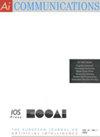An argumentative approach for handling inconsistency in prioritized Datalog± ontologies
IF 1.4
4区 计算机科学
Q4 COMPUTER SCIENCE, ARTIFICIAL INTELLIGENCE
引用次数: 1
Abstract
Prioritized Datalog ± is a well-studied formalism for modelling ontological knowledge and data, and has a success story in many applications in the (Semantic) Web and in other domains. Since the information content on the Web is both inherently context-dependent and frequently updated, the occurrence of a logical inconsistency is often inevitable. This phenomenon has led the research community to develop various types of inconsistency-tolerant semantics over the last few decades. Although the study of query answering under inconsistency-tolerant semantics is well-understood, the problem of explaining query answering under such semantics took considerably less attention, especially in the scenario where the facts are prioritized. In this paper, we aim to fill this gap. More specifically, we use Dung’s abstract argumentation framework to address the problem of explaining inconsistency-tolerant query answering in Datalog ± KB where facts are prioritized, or preordered. We clarify the relationship between preferred repair semantics and various notions of extensions for argumentation frameworks. The strength of such argumentation-based approach is the explainability; users can more easily understand why different points of views are conflicting and why the query answer is entailed (or not) under different semantics. To this end we introduce the formal notion of a dialogical explanation, and show how it can be used to both explain showing why query results hold and not hold according to the known semantics in inconsistent Datalog ± knowledge bases.处理优先数据本体论中不一致的论证方法
优先数据表()是一种经过充分研究的用于建模本体论知识和数据的形式化方法,在(语义)Web和其他领域的许多应用中都取得了成功。由于Web上的信息内容本质上依赖于上下文并且经常更新,因此逻辑不一致的发生通常是不可避免的。在过去的几十年里,这种现象导致研究团体开发了各种类型的不一致容忍语义。尽管对不一致容忍语义下查询应答的研究已经得到了很好的理解,但在这种语义下解释查询应答的问题却很少受到关注,特别是在事实优先的情况下。在本文中,我们的目标是填补这一空白。更具体地说,我们使用Dung的抽象论证框架来解决Datalog±KB中解释不一致查询回答的问题,其中事实是优先级或预定的。我们澄清了首选修复语义和论证框架的各种扩展概念之间的关系。这种基于论证的方法的优势在于可解释性;用户可以更容易地理解为什么不同的观点是冲突的,以及为什么查询答案包含(或不包含)在不同的语义下。为此,我们引入了对话解释的形式化概念,并展示了如何使用它来解释显示为什么根据不一致Datalog±知识库中的已知语义,查询结果成立或不成立。
本文章由计算机程序翻译,如有差异,请以英文原文为准。
求助全文
约1分钟内获得全文
求助全文
来源期刊

AI Communications
工程技术-计算机:人工智能
CiteScore
2.30
自引率
12.50%
发文量
34
审稿时长
4.5 months
期刊介绍:
AI Communications is a journal on artificial intelligence (AI) which has a close relationship to EurAI (European Association for Artificial Intelligence, formerly ECCAI). It covers the whole AI community: Scientific institutions as well as commercial and industrial companies.
AI Communications aims to enhance contacts and information exchange between AI researchers and developers, and to provide supranational information to those concerned with AI and advanced information processing. AI Communications publishes refereed articles concerning scientific and technical AI procedures, provided they are of sufficient interest to a large readership of both scientific and practical background. In addition it contains high-level background material, both at the technical level as well as the level of opinions, policies and news.
 求助内容:
求助内容: 应助结果提醒方式:
应助结果提醒方式:


